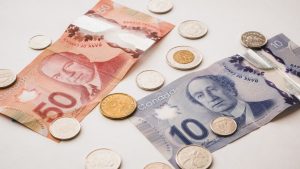Forex trading is an exciting and lucrative financial activity, but it can also be risky and challenging. As a beginner in forex trading, it is essential to practice and learn the basics before investing real money into the market. One way to do this is by using a forex simulator, which allows you to simulate forex trading without risking any real money. In this article, we will explore how to create a forex simulator with Excel.
Step 1: Set up the Simulator Worksheet
The first step is to create a new worksheet in Excel and name it “Forex Simulator.” In this worksheet, you will create a table to store the simulated trades. Create columns for the following information:
– Date: This column will store the date of the simulated trade.
– Currency Pair: This column will store the currency pair of the simulated trade.
– Buy/Sell: This column will store whether the trade was a buy or a sell.
– Entry Price: This column will store the price at which the trade was entered.
– Exit Price: This column will store the price at which the trade was exited.
– Profit/Loss: This column will calculate the profit or loss of the trade.
Step 2: Add Historical Data
To create a realistic forex simulator, you need to add historical forex data to the worksheet. You can download historical forex data from various sources, such as Yahoo Finance or TradingView. Once you have downloaded the data, you can import it into Excel using the “Data” tab and selecting “From Text/CSV” or “From Web” options.
After importing the data, you can create a chart to visualize the historical data. This will help you identify trends and patterns in the market, which can be useful in making simulated trades.
Step 3: Create Formulas for Simulated Trades
Now that you have historical data, you can start simulating trades. To do this, you need to create formulas that will calculate the profit or loss of each trade. The formula for calculating profit or loss is:
Profit/Loss = (Exit Price – Entry Price) x Lot Size x Contract Size x Exchange Rate
Lot Size is the number of units of currency traded, Contract Size is the value of one lot in the base currency, and Exchange Rate is the rate at which the currency pair is traded.
You can use Excel’s built-in functions to calculate the profit or loss of each trade. For example, you can use the VLOOKUP function to look up the exchange rate for the currency pair at the time of the trade.
Step 4: Test and Refine the Simulator
Once you have created the formulas, you can start testing the simulator by making simulated trades based on historical data. You can also use the simulator to test different trading strategies and see how they perform in different market conditions.
As you test the simulator, you may find areas for improvement. For example, you may need to adjust the formulas to account for slippage or other trading costs. You may also want to add additional columns to the table to track other metrics, such as the duration of each trade.
Step 5: Use the Simulator to Improve Your Trading Skills
The forex simulator you have created can be a valuable tool for improving your trading skills. By making simulated trades and analyzing the results, you can identify patterns and trends in the market and refine your trading strategies. You can also use the simulator to test the effectiveness of different risk management techniques, such as stop-loss orders and position sizing.
In conclusion, creating a forex simulator with Excel is a valuable tool for improving your trading skills. By using historical data and creating formulas to simulate trades, you can test different trading strategies and refine your skills without risking any real money. With practice and experience, you can use the simulator to become a successful forex trader.






